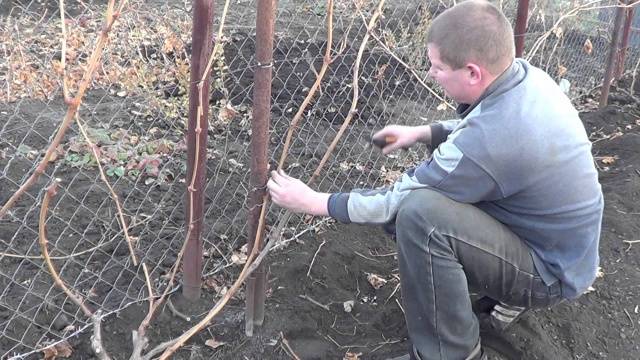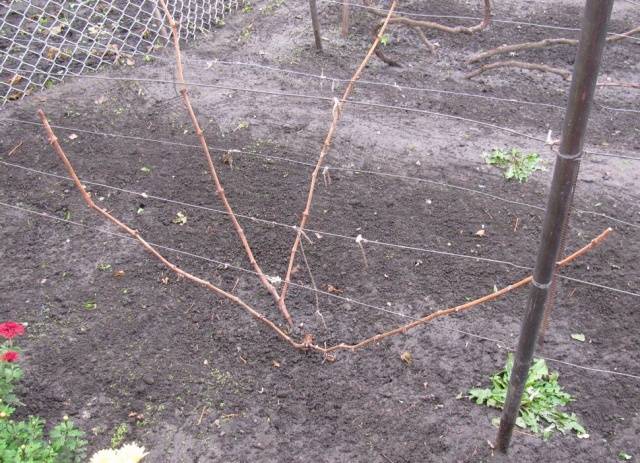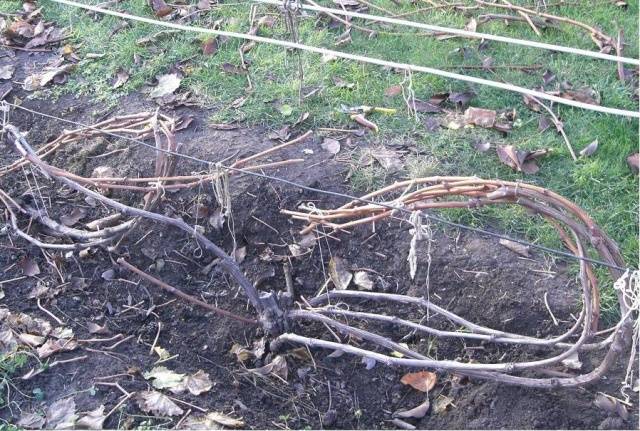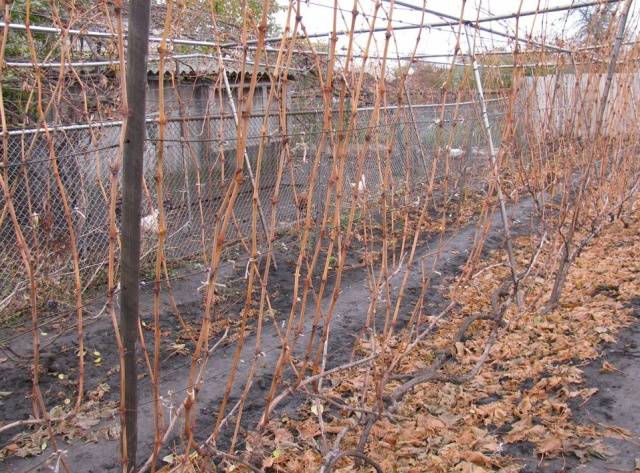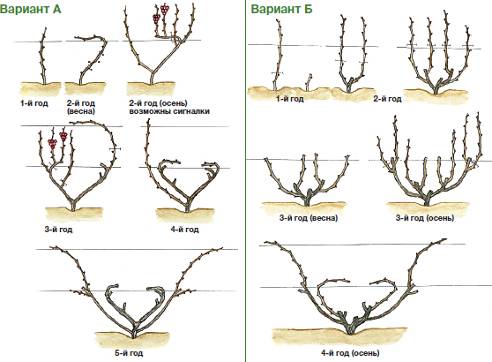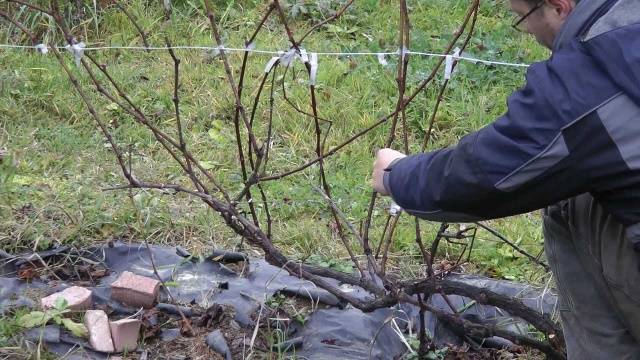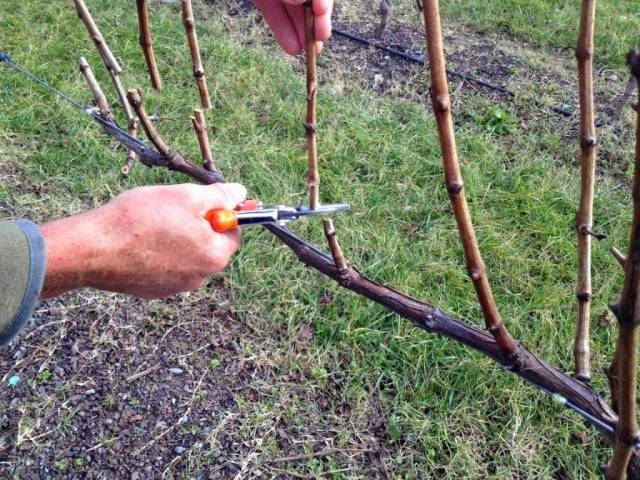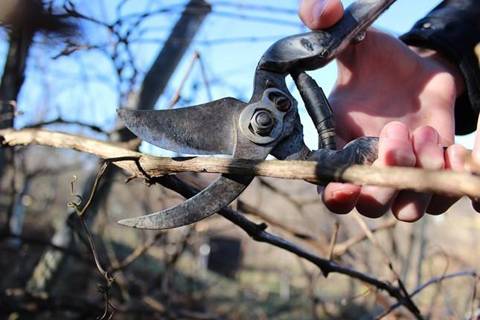Content
Novice growers often don't know how to do it right. prune grapeswhat time of year it is best to do it. Too careful pruning is considered the most common mistake for beginners, and it is also difficult for a novice gardener to determine the correct time for vaccinations.
Grapes, on the other hand, are a southern plant, the climate of the middle zone is unusual and too harsh for it, therefore a lot depends on pruning the bushes: how the plant will survive the winter, how productive the next season will be, whether the berries will be tasty and large.
This article is about pruning grapes in autumn for beginners, in pictures and diagrams, beginners will be able to see how to properly graft vines of different ages.
What is grape pruning for?
Grafting of grapes, or, as it is more commonly called, pruning, is really necessary. Many growers make a huge mistake, neglecting this stage of plant care, as a result, the yield of the bushes suffers, the vines get sick and freeze, and the berries themselves become tasteless and small.
The role of grape pruning is difficult to overestimate, because it solves such problems, as:
- increasing the frost resistance of the vine, which is especially important for thermophilic and non-covering varieties;
- an increase in yield due to pruning of old shoots, as well as those vines that prevent the bush from developing correctly;
- optimization of the ratio of the aboveground part of grapes and its roots, regulation of the thickening of shoots;
- prevention of crumbling berries, deterioration of the taste of grapes;
- simplification of plant insulation for the winter period, because it is very easy to cover shortened, well-formed vines;
- the acceleration of the process of sap flow in the shoots cut from the fall provides earlier harvests.
When to prune grapes
There is some controversy over the timing of pruning, but most growers argue that it is best to prune in the fall. The fact is that spring pruning often leads to the "crying" of the vine, because of which not all buds bloom, the yield decreases, and the pruned shoot may dry out. All this happens because with the onset of warm days, juice begins to move in the grapes, the plant becomes weak and susceptible to wounds and infections.
Factors such as the climate in the region, the air temperature during the day and at night, the type of plant, the need for further shelter of the vine will help to choose the exact date for the autumn pruning of grapes.
Determining the date of the autumn pruning of grapes, factors to consider:
- The longer the bunches remain on the shoots, the more nutrients the roots of the grapes accumulate. This means that the plant will be stronger and better endure the winter.
- Daytime temperatures should not drop below -5 degrees, since at this temperature the vine becomes fragile, the plant may suffer in the process of pruning or tying shoots.
- The first night frosts must have already come so that the sap flow in the grapes stops, otherwise the shoot will "cry" and inevitably freeze out.
- All leaves from the bush should fall off, and the bunches should be cut off.
The preliminary pruning of the vine is carried out in September, when the entire grape harvest will be harvested, the second stage falls on the middle of October, when it is time to tie the vines for subsequent warming.
How to prune grapes in the fall
Grapes in autumn can be pruned in various ways, but the pruning method must be chosen in the first year of the plant's life and followed throughout the growing season.
The pruning scheme depends on various factors, such as:
- plant age;
- grape sort;
- the need for winter shelter (frost-resistant variety or not);
- thickening of the vineyard.
To properly prune grapes in the fall, you need to understand the appropriate terminology:
- It is customary to call a stem a shoot emerging from the ground at a right angle;
- the growth point can be called a cordon or a sleeve. The cordon grows from the trunk, and the sleeves come out directly from the ground;
- on the sleeves, fruit vines are located on top, and on cordons they are located along the entire shoot.
Basic grape pruning schemes
In the fall, the vine needs to be shaped so that in the spring it sprouts fruit stalks, on which the harvest is formed in the form of bunches. Pruning schemes depend on whether the grapes will take shelter for the winter. Depending on this, fan and standard pruning of the vineyard is distinguished.
Fan grafting of grapes is carried out for covering varieties. This method of vine formation has a number of advantages, including rapid rejuvenation of the bushes without reducing yield and free movement of shoots, allowing them to bend them to the ground and cover them for the winter.
Fans from grape vines need to be formed in the following sequence:
- Pruning of young grapes begins in the first year of the plant's life. In the fall of this year, the shoot is cut so that 3 buds remain. In the spring, the buds should give new branches, but the young plant may not have enough strength, as a result, not all buds will wake up. If all three shoots hatch, pinch the middle one.
- In the second autumn, you need to lay down the replacement knots. To do this, pinch two shoots up to 3-4 buds.
- The third autumn is the time for the formation of sleeves. The vines should by this time be more than a meter long and have a thickness of about 8 mm - these are the future branches of the vineyard. In the fall, they need to be shortened in half, leaving, somewhere, half-meter shoots. These branches are tied to a wire at a height of about 30 cm from the ground.
- The vine is then shaped so that the inner sleeves are shorter than the outer ones.
- The fourth autumn is the time of the final formation of the grape fan. In the spring, all shoots on the sleeves are removed, except for two or three of the uppermost ones. They should be placed vertically - these are fruiting shoots, they are tied to a trellis or support.
- In the fall of the fourth year, you need to cut off the shoots on the sleeves. The upper fruiting vines are pinched in the region of 7-8 buds, on the lower ones only 2-3 buds are left - these are replacement knots. You should get a fan consisting of four arms and four fruit vines.
- Each following autumn, you need to prune the vines that have borne fruit in the current season. Next year they will be replaced by new shoots growing from replacement knots.
- Old sleeves should be trimmed two or three buds from the base to help rejuvenate the grapes. Such knots are called - hemp recovery.
Autumn pruning of vineyards using the standard method is used for those varieties that do not need shelter for the winter, therefore, winegrowers of the southern regions most often resort to this method.
Standard pruning of grapes in the fall for beginners is carried out in several stages:
- Pruning begins in the first year - the shoot is shortened to 2-3 buds.
- In the spring of next year, the bush should be examined and the two most powerful sprouts should be identified. The one that is larger will be a stem, it is pinched at the top so that the shoot becomes more powerful. The second branch is considered a reserve stem. In the fall, you need to cut both shoots to the desired length.
- In the fall of the second year, all young shoots of grapes are cut, except for the two uppermost and strongest ones. These processes are pinched into two kidneys - these are the shoulders of the cordon. At the level of shoot growth, a strong wire is pulled and the shoulders of a cordon are tied to it.
- The next fall, both shoots are shortened: one in two buds is a replacement knot, and the second is cut to the sixth eye - this, in the future, is a fruiting vine.
- Autumn of the fourth year is the time for laying fruit-bearing branches. To form them, you need to remove all the shoots on the shoulders of the cordon, leaving the strongest at a distance of about 20 cm from each other.
- In the fifth year, they do a simple pruning of the vineyard - they simply shorten all the vines by 2-3 buds.
- In the sixth year, the formation of the trunk is completed. For this, the shoots that have matured over the summer are cut out, only a couple of the most powerful vines remain on top of the bush. One of them is cut to 2-3 buds - a replacement knot, the second is shortened to the sixth eye - a fruiting vine.
- Each next year, pruning old grapes consists in cutting out the fruiting shoot. New fruit vines are formed on replacement knots.
findings
In the first 5-6 years after planting, the grapes do not bear fruit, during this period the plant grows in mass, forms future fruit vines. therefore the essence of pruning young grapes is the formation of a bush, the selection of those vines that will later bring the harvest.
After this stage begins fruiting period, it lasts, depending on the grape variety, about 20-25 years. Pruning at this age consists in maintaining the shape of the bush, removing old and diseased shoots, and forming young fruiting vines.
After this, the most active phase, the extinction of the plant occurs, the gardener can carry out rejuvenating pruning to prolong the fruiting of your vineyard.
Beginners who find it difficult to navigate the diagrams and drawings can watch a video about the different stages of grape development and the rules for pruning it at each age:

